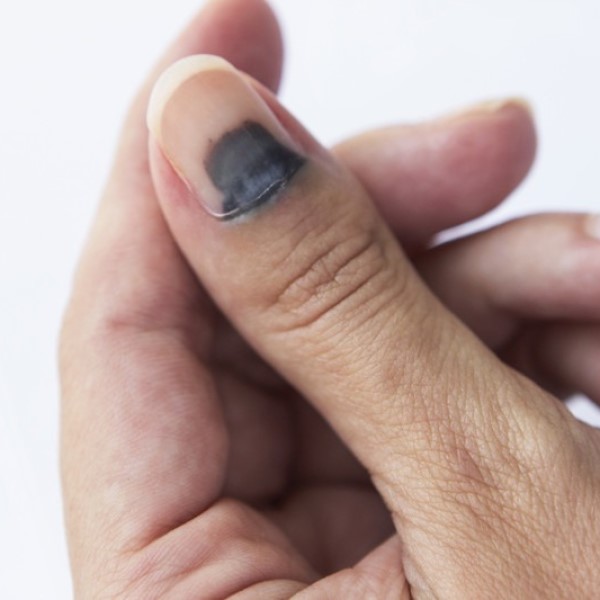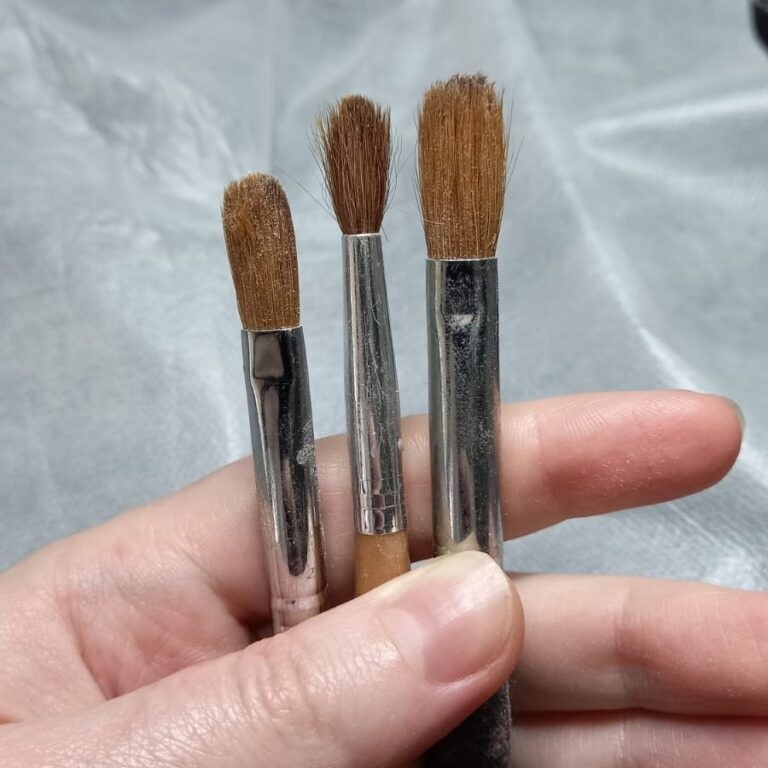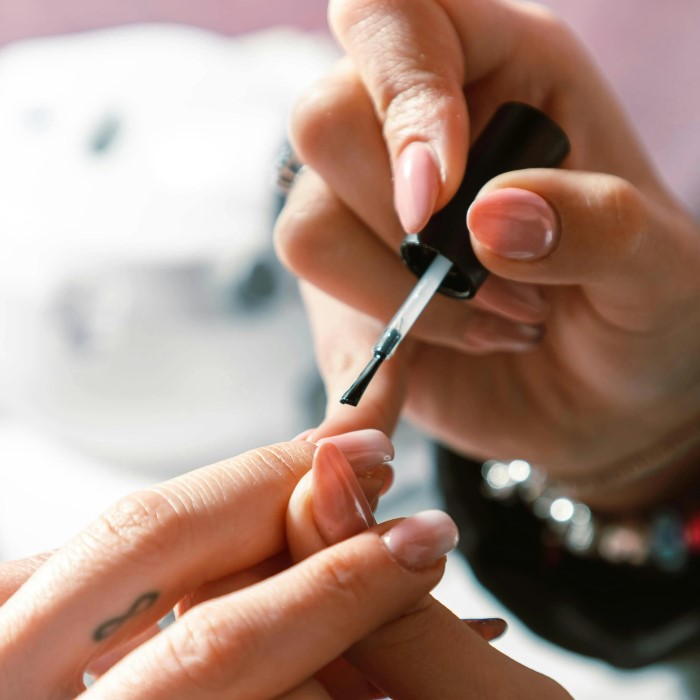
What Is a Nail Bed? How It Affects Manicures and Nail Growth
Introduction
Understanding the anatomy of nails is essential for anyone involved in nail care, whether you’re a professional nail technician or simply passionate about manicures. Among the various components that make up a nail, the nail bed plays a crucial role. So, what is a nail bed? It is the skin underneath the nail plate, and it serves as the foundation for nail growth. The nail bed is crucial because it contains living tissues, blood vessels, and nerves that nourish and support the nail. Without a healthy nail, maintaining aesthetically pleasing nails and effective nail growth becomes challenging. In this article, we will explore the significance of the nail in relation to nail growth, its function, and essential care tips.

What Is Considered a Nail Bed?
Defining the nail bed involves understanding its structure and role within the nail anatomy. The nail bed is located beneath the visible nail plate and extends from the cuticle at the base of the nail to the end of the nail tip. It consists of living skin tissues that are composed of the dermis and epidermis, providing a supportive environment for nail development.
- Nail Bed Layers: The earthen structure of the nail bed includes two primary layers:
- Epidermis: This outer layer acts as a protective barrier.
- Dermis: The deeper layer contains blood vessels and nerve endings that supply nutrients and sensation to the nail bed.
- Nail Matrix: The nail bed is closely associated with the nail matrix, which lies just under the cuticle. This matrix is responsible for producing new nail cells that harden to form the nail plate.
- Nail Folds: Surrounding the nail bed are skin folds that help protect the bed and nail matrix from infection and environmental damage. These folds play an essential role in the overall health of the nails.
The Importance
The health of the nail bed significantly impacts the quality of your nails and the effectiveness of any manicure. A well-nourished nail bed contributes to strong, healthy nails while an unhealthy nail bed can lead to various problems, including slow growth, discoloration, and increased susceptibility to infections.
- Growth and Longevity of Nails: Healthy nail beds facilitate faster growth and durability of nails. When nails are strong, they are less likely to become brittle or prone to chipping.
- Aesthetic Appeal: A clean and properly maintained nail bed enhances the appearance of manicures. Healthy nails look smoother and shinier, making any nail art application more vibrant.
- Preventing Conditions: Neglecting nail bed care can lead to several disorders, including fungal infections, ingrown nails, and nail dystrophy. By regularly assessing the health of your nail bed, you can catch problems before they escalate.
- Functional Benefits: For those who perform hands-on tasks, maintaining a healthy nail bed is essential. Nails that remain intact and functional will not hinder your daily activities.
- Identifying Underlying Health Issues: Changes in your nail bed’s condition can be indicators of broader health issues. If you notice unusual discoloration or shape, it may be time to consult a healthcare professional.
How Nail Growth Works
It’s essential to understand the process of nail growth to appreciate the nail bed’s role. Nails grow from the nail matrix, and the rate of growth can vary based on many factors, including:
- Rate of Growth: On average, nails grow about 1/8 inch per month. However, factors such as age, health, and genetics can impact this rate.
- Blood Circulation: The health of the nail bed directly influences nail growth. Good circulation ensures that the nail matrix receives the nutrients it needs to produce new nail cells.
- Influence of Diet and Hydration: A balanced diet rich in vitamins and minerals promotes nail health. Consuming foods high in biotin, vitamin E, zinc, and protein can support healthy nail growth.
- Environmental Factors: Exposure to harsh chemicals, inadequate hydration, or physical trauma can affect both nail growth and the health of the nail bed. Protective measures and mindful care practices can mitigate these risks.
- Age-Related Changes: As people age, the rate of nail growth may slow, and nails may become thinner and more brittle. Regular care becomes increasingly important for maintaining nail health.
What Should a Nail Bed Look Like?
What is a nail bed? Knowing what a healthy nail bed looks like can help you identify issues more quickly. Here’s a guide on the characteristics of a well-maintained nail bed:
- Smooth Texture: Your nail bed should have a smooth, even surface. Any bumps, ridges, or irregularities may indicate an underlying condition.
- Healthy Color: A pinkish hue is typically a sign of good health and adequate blood circulation. Changes in color, such as pale or dark spots, may suggest health issues that should be addressed.
- Absence of Discoloration: Healthy nail beds are free from spots or stains that could indicate infections, bruising, or other conditions.
- Even Nail Growth: Uniform nail growth indicates a healthy nail. Frequent breaks, splits, or irregular growth patterns may signal problems that need attention.
- Nail Shape: Ideally, the nails should be shaped well and free from any curling or unusual growth angles. Changes in the nail shape can indicate complications related to nail bed health.
Caring for Your Nail
What is a nail bed? Proper care for your nail bed is crucial for sustaining nail health. Here are several effective strategies to ensure your nail remains healthy:
Regular Maintenance
- Importance of Routine Grooming: Regular grooming is vital for maintaining the health and aesthetics of your nails. It involves consistent trimming, shaping, and cleaning of your nails to prevent unsightly issues and ensure they remain in good condition.
- Trimming Nails: Regular trimming helps to keep nails at a manageable length, reducing the risk of breakage or snagging on clothing. It is advisable to trim nails with sharp nail clippers, following the natural shape of the nail, which helps maintain their integrity.
- Cleaning Techniques: Regularly cleaning your nails is equally important. This includes removing dirt and debris that can accumulate under the nails. Use a gentle soap and a soft brush to ensure your nails and nail are clean without damaging the sensitive skin.
- Preventing Buildup: By regularly checking and cleaning your nails, you effectively prevent the buildup of dead skin cells and other debris that can harbor bacteria. This is crucial for maintaining healthy nail, as buildup can lead to infection and irritation.
Moisturize
- Hydration Benefits: Keeping your nails and surrounding skin well-hydrated is key to overall nail health. Dehydration can lead to dry, brittle nails as well as flaky or cracked cuticles.
- Use of Cuticle Oils: Cuticle oils are specially formulated to nourish and moisturize the cuticles and nail. Applying cuticle oil regularly can enhance flexibility and prevent tearing or splitting.
- Choosing Moisturizing Lotions: In addition to oils, using a high-quality moisturizing lotion can help keep the skin around your nails soft and supple. Look for lotions that contain hydrating ingredients like shea butter or glycerin, which lock in moisture effectively.
- Daily Application: Incorporate moisturizing into your daily skincare routine. Applying a small amount of moisturizer or cuticle oil after washing your hands or taking a shower can significantly benefit nail and cuticle health.
Mind Your Diet
- Nutritional Importance: Your diet plays a significant role in the health of your nails. Consuming a balanced diet rich in certain nutrients can promote strong and healthy nails from the inside out.
- Omega-3 Fatty Acids: Include foods rich in omega-3 fatty acids, such as salmon, walnuts, and flaxseeds. These healthy fats support nail hydration and can enhance overall nail flexibility and strength.
- Biotin and Vitamins: Biotin, a B-vitamin, is particularly known for its benefits to nail health. Foods like eggs, nuts, and whole grains are excellent sources of biotin. Also, ensure you’re getting enough vitamins A, C, and E, as they contribute to general nail health.
- Hydration and Its Role: Adequate hydration is essential for overall body health, including nail health. Drinking plenty of water daily helps to keep your nails and cuticles hydrated.
Minimize Exposure to Chemicals
- Identifying Harmful Chemicals: Many household cleaners and chemicals can be harsh on your nails and the skin surrounding them. Substances like bleach, ammonia, and other abrasive cleaners can cause irritation and damage to your nail.
- Wearing Gloves: To protect your nails, always wear gloves when handling cleaning products or chemicals. This creates a barrier that not only prevents direct contact but also reduces exposure to harmful substances.
- Selecting Safer Products: Consider using environmentally friendly and non-toxic cleaners whenever possible. These alternatives can effectively clean your home without the harsh effects on your nails.
- Frequent Hand Washing: If you frequently wash your hands, especially with harsh soaps, make sure to use moisturizing soaps or aftercare lotion to maintain hydration and protect your nails.
Avoid Nail Biting
- Understanding the Habit: Nail biting can be a compulsive behavior caused by stress, anxiety, or simply habit. This behavior can severely damage both the nail plate and the nail bed, leading to potential infections and long-term damage.
- Impact on Nail Health: Biting your nails can result in irregular nail growth, hangnails, and even expose the nail bed to bacteria. Over time, this can lead to permanent changes in nail structure and health.
- Breaking the Habit: If you are struggling with nail biting, consider using bitter-tasting nail polish designed to deter this habit. Mindfulness techniques, such as stress management or keeping your hands busy, can also aid in breaking the cycle.
- Support and Accountability: Discussing your habit with friends or family can provide additional motivation and accountability. In some cases, consulting a therapist may help to address underlying causes of stress or anxiety contributing to nail biting.
Regular Check-Ups
- Routine Observation: Regularly monitor your nails and nail for any unusual signs or changes. This includes inspecting the color, texture, and overall appearance of your nails and surrounding skin.
- Identifying Changes: Unusual changes could include discoloration, swelling, or excessive dryness. Noticing these changes promptly can help in taking timely action, preventing further complications.
- Consulting a Professional: If you observe any concerning changes or if you experience pain or discomfort, it’s crucial to consult a healthcare professional. Early diagnosis and intervention are key to resolving any potential issues before they escalate.
- Annual Check-Ups: In addition to self-checks, regular visits to healthcare providers can provide insight into your overall health and help keep your nails in optimum condition.
FAQs
What is a nail bed?
A nail bed is the part of the skin underneath the visible nail plate, responsible for nail growth and containing important blood vessels and nerves.
Does the nail bed grow back?
Yes, the nail bed can regenerate. If it experiences minor injuries, the tissue can heal over time, although the extent of regeneration may vary based on the injury’s severity and care provided.
Conclusion
What is a nail bed? In conclusion, understanding what a nail bed is and its role in nail growth, aesthetics, and overall health is vital for anyone interested in nail care. A healthy nail bed not only enhances the appearance and durability of your nails but also serves as a critical indicator of your overall health. By maintaining proper care for your nail bed—through regular examination, moisturizing, and a healthy lifestyle—you will set the foundation for beautiful and resilient nails. Emphasizing bed health can lead to effective, long-lasting manicures that reflect your commitment to nail care. In this craft, beauty is more than skin deep; it begins beneath the surface, where your nail bed thrives. Take the time to nurture it, and your nails will thank you with grace and beauty.




